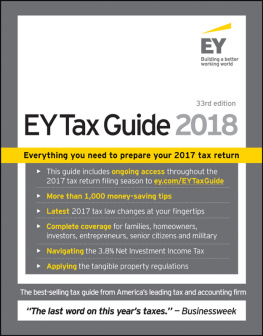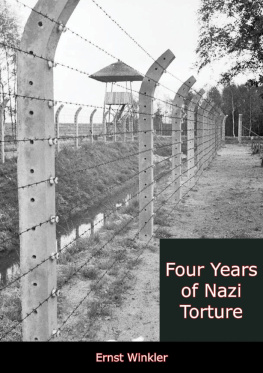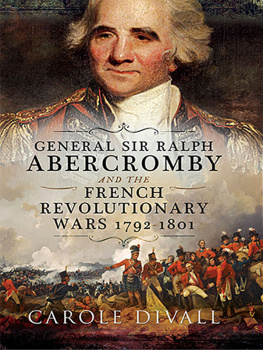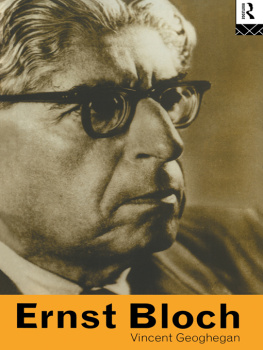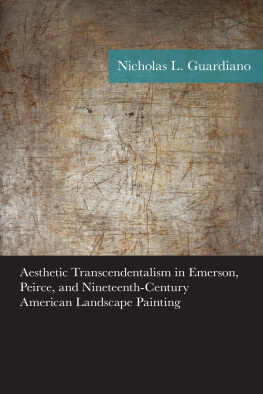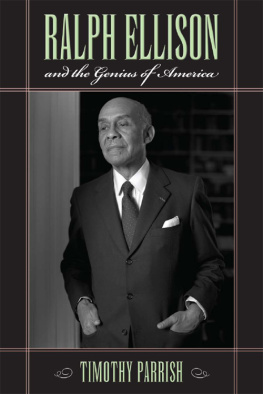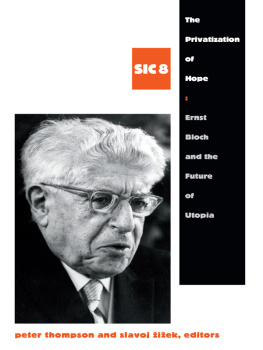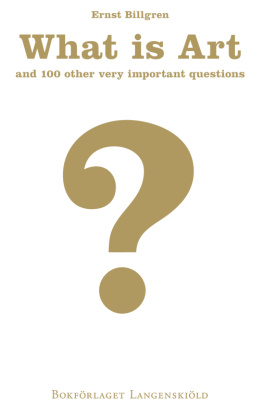Ralph Ubl - Prehistoric Future: Max Ernst and the Return of Painting Between the Wars
Here you can read online Ralph Ubl - Prehistoric Future: Max Ernst and the Return of Painting Between the Wars full text of the book (entire story) in english for free. Download pdf and epub, get meaning, cover and reviews about this ebook. year: 2013, publisher: The University of Chicago Press, genre: Romance novel. Description of the work, (preface) as well as reviews are available. Best literature library LitArk.com created for fans of good reading and offers a wide selection of genres:
Romance novel
Science fiction
Adventure
Detective
Science
History
Home and family
Prose
Art
Politics
Computer
Non-fiction
Religion
Business
Children
Humor
Choose a favorite category and find really read worthwhile books. Enjoy immersion in the world of imagination, feel the emotions of the characters or learn something new for yourself, make an fascinating discovery.

- Book:Prehistoric Future: Max Ernst and the Return of Painting Between the Wars
- Author:
- Publisher:The University of Chicago Press
- Genre:
- Year:2013
- Rating:4 / 5
- Favourites:Add to favourites
- Your mark:
- 80
- 1
- 2
- 3
- 4
- 5
Prehistoric Future: Max Ernst and the Return of Painting Between the Wars: summary, description and annotation
We offer to read an annotation, description, summary or preface (depends on what the author of the book "Prehistoric Future: Max Ernst and the Return of Painting Between the Wars" wrote himself). If you haven't found the necessary information about the book — write in the comments, we will try to find it.
Ralph Ubl: author's other books
Who wrote Prehistoric Future: Max Ernst and the Return of Painting Between the Wars? Find out the surname, the name of the author of the book and a list of all author's works by series.
Prehistoric Future: Max Ernst and the Return of Painting Between the Wars — read online for free the complete book (whole text) full work
Below is the text of the book, divided by pages. System saving the place of the last page read, allows you to conveniently read the book "Prehistoric Future: Max Ernst and the Return of Painting Between the Wars" online for free, without having to search again every time where you left off. Put a bookmark, and you can go to the page where you finished reading at any time.
Font size:
Interval:
Bookmark:
Ralph Ubl is professor of art history at the University of Basel in Switzerland.
The University of Chicago Press, Chicago 60637
The University of Chicago Press, Ltd., London
Originally published as Prhistorische Zukunft: Max Ernst und die Ungleichzeitigkeit des Bildes
2004 Wilhelm Fink Verlag GmbH & Co. KG, Paderborn / Germany
English translation 2013 by The University of Chicago
All rights reserved. Published 2013.
Printed in China
23 22 21 20 19 18 17 16 15 14 1 2 3 4 5
ISBN-13: 978-0-226-82372-0 (cloth)
ISBN-13: 978-0-226-02931-3 (e-book)
The translator would like to thank Stephanie Ezrol for her help with the French passages.
Library of Congress Cataloging-in-Publication Data
Ubl, Ralph.
[Prhistorische Zukunft. English]
Prehistoric future: Max Ernst and the return of painting between the wars / Ralph Ubl; translated by Elizabeth Tucker.
pages; cm
Includes bibliographical references and index.
ISBN 978-0-226-82372-0 (cloth: alkaline paper)ISBN 978-0-226-02931-3 (e-book)
1. Ernst, Max, 18911976Criticism and interpretation. 2. Ernst, Max, 18911976Influence. 3. Painting, Modern20th centuryHistory. 4. Dadaism. 5. Surrealism. I. Title.
N6888.E7U2413 2014
709.2dc23
2013002936
 This paper meets the requirements of ANSI/NISO Z39.48-1992 (Permanence of Paper).
This paper meets the requirements of ANSI/NISO Z39.48-1992 (Permanence of Paper).
Prehistoric Future
MAX ERNST AND THE RETURN OF PAINTING BETWEEN THE WARS
RALPH UBL Translated by Elizabeth Tucker
THE UNIVERSITY OF CHICAGO PRESS
Chicago and London
CONTENTS
PREFACE
I wrote this book in Vienna and Berlin between 1998 and 2002. It was first published in 2004. For the present translation, I left the main body of the German original unaltered except for some minor clarifications and corrections of factual errors. The 2004 that is of particular importance to this study.
...
Looking back at the various stages of my work on Max Ernst, I am filled with gratitude for the support I enjoyed along the way. First of all, my thanks go to Friedrich Teja Bach. Without his dedication as adviser and his scholarly example, I would have never had the courage to commit myself to this project. From my Viennese friends, I have learned more than I can say. Ever since our student days, Wolfram Pichler, Barbara Wittmann, Karin Gludovatz, Markus Klammer, and Stefan Neuner have been vital sources of encouragement and inspiration. I would not have dared to come back to my first book if it had not been the occasion of a few stimulating exchanges over the last ten years. Particularly important in this regard has been the impression of conversations with Gottfried Boehm, Michael Fried, Mark Haxthausen, Josef Helfenstein, Inka Mlder-Bach, Robert Pippin, Beate Sntgen, Nicola Suthor, Juliane Vogel, Gerhard Wolf, and Christopher Wood. I also want to thank Andrei Pop, who, at the very last moment, made two important suggestions. Last but not least, I want to express my warmest gratitude to Elizabeth Tucker for her elegant and thoughtful translation.
INTRODUCTION
Max Ernsts pictures can be read as shrewd experiments in various techniques. They test the possibilities of collage, frottage, grattage, different methods of painting and printing, but also wordplayand the mutual imitation and intersection of these devices. Louis Aragon introduced this view as early as 1923, in his text Max Ernst, peintre des illusions (Max Ernst, Painter ofthe same explosive power courses through him as through the inspired poet, as well as through film.
While Breton emphasizes the artists receptivity, Aragon is interested in the artists procedures. This contrast between passivity and activity can also be observed in Ernsts writings. By means of their form, they make it apparent that they were meticulously fabricated. Even the title of his autobiographical notes, presented to an American readership in 1942, mixes the factual and the legendary: symptoms of psychic processes that evade the artists control. As an example, there is the frequently cited passage in which Ernst relates the origin of collage:
One rainy day in 1919, finding myself in a village on the Rhine, I was struck by the obsession which held under my gaze the pages of an illustrated catalogue showing objects designed for anthropologic, microscopic, psychologic, mineralogic,
Art has its origin in a passive eye that is both overwhelmed and stimulated by the heterogeneity of already-existing images, and the artists work is restricted to the performance of a secondary service (gently reproducing only on whether one considers their content or their rhetorical form. For Ernst, collage is always both: it is an unconscious process and simultaneously an artistic procedure with a superior capacity to emphasize the moment of fabrication.
Art history, however, has not shown any interest in this vacillation. The most important works on this topic can be characterized by their taking up one of the
In these two approaches to Ernsts work, one can see yet another example of the well-known (and highly unproductive) division of art history in general into a concentration of tension between them must be examined. In this way, an avant-gardist such as Ernst can be understood as an artist who was committed both to the reduction of art to its procedures as well as to its channeling of unavailable powers, and who conceived of this double commitment as a productive contradiction.
Before I turn to this project, I would like to do my part to clarify what the terms procedure and unconscious production can be taken to mean. It is important to note that procedure cannot automatically be equated with a technical innovation. Ernst was right to assert that collage does not come from glue. This and other procedures can only be analyzed in their respective specific contexts of application, which themselves are difficult to isolate. To begin with, the context of application encompasses more than the single work; it also involves the ideological, social, and historical implications that were associated with a procedure at a particular point in time. Thus, I will show that the context of frottage as Ernst used it in 1925 includes (among other factors) the theory of surrealist automatism, the idea that photography was an indexical medium, the history of educational illustrations, the love triangle between Max Ernst and Gala and Paul luard, and, finally, the relationship of frottage to other procedures such as collage or overpainting. In abstract terms, artistic procedures are not merely available or newly developed techniques; they are the result as well as the driving force of a historical process that cannot very readily be isolated.
With the same historicizing places where the different procedures that Ernst employed generate effects of the unavailablewhere that which has been made changes into something that evades human fabrication and that implies another authority of production.
But what fuels this unconscious production that manifests itself in the use of artistic procedures? The answer I will present in this book is paintingor, more precisely, paintings remains, inasmuch as this art is dismantled by the procedures of the avant-garde and thus transformed into something foreign. Thus, I will begin my study with the thesis that avant-garde procedures developed their own unconscious by destroying painting. What I referred to earlier (somewhat vaguely) as effects of unavailability can now be organized into a group of phenomena that all relate to the dismantled components of the painting. These include perspective, which gives each object a position in the represented space and guides the viewers gaze; the ground upon which the represented figures stand and through which they achieve weight; the picture plane, which seals the painting behind a transparent and fictive boundary; the traditional rectangular format, which makes the pictures outer boundaries inconspicuous; facture, which gives each object its specific materiality; and contour, which distinguishes the objects from one another. Once these elements had been detached from the structure of the painting and thus also distorted, they could become the basis for resistance to the very procedures that had carried out this detachment and distortion. Ernsts art becomes an art of the unconsciousan art that would be closely connected with the theories of Freud, Breton, and Benjaminbecause in it, painting, having come under attack by the avant-garde, continues to exert an influence as a repressed power.
Next pageFont size:
Interval:
Bookmark:
Similar books «Prehistoric Future: Max Ernst and the Return of Painting Between the Wars»
Look at similar books to Prehistoric Future: Max Ernst and the Return of Painting Between the Wars. We have selected literature similar in name and meaning in the hope of providing readers with more options to find new, interesting, not yet read works.
Discussion, reviews of the book Prehistoric Future: Max Ernst and the Return of Painting Between the Wars and just readers' own opinions. Leave your comments, write what you think about the work, its meaning or the main characters. Specify what exactly you liked and what you didn't like, and why you think so.

